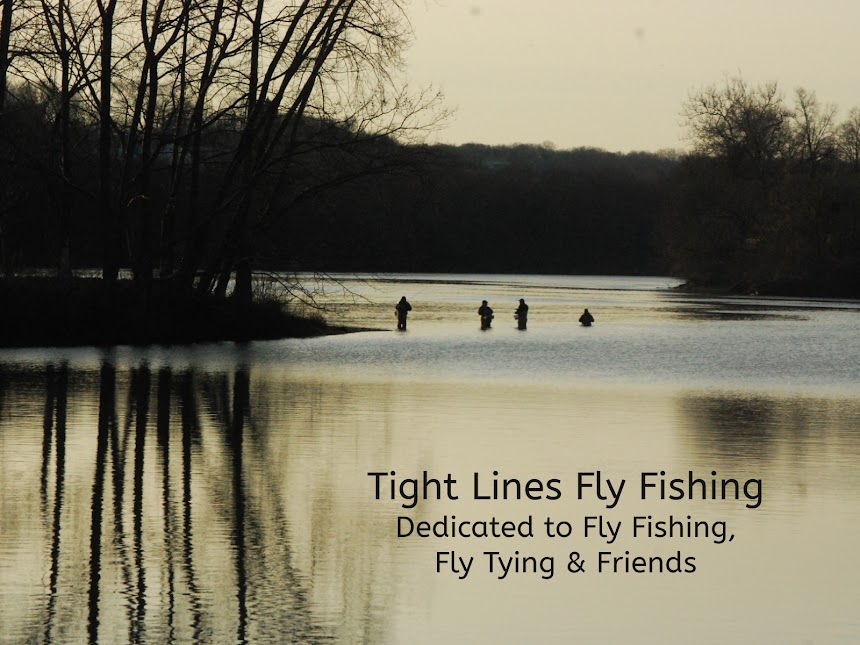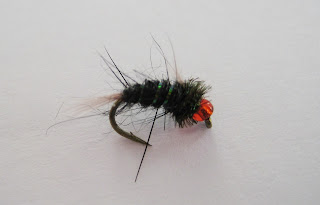Orange Headed Butt Monkey
Hook: Tiemco 2487 Size #14
Bead: Orange plastic or metal bead Thread: Black
Tail/Shuck: Blue Dun hen fibers or Blue Dunn Z-lon)
Rib: Pearl Krystal Flash
Dubbing: Black Hare’s Ear or Squirrel
Wing: Blue Dun hen fibers or Blue Dun Z-lon)
Collar: 1 or 2 strands peacock herl
I
love fishing black nymphs and this is one of my favorites. If I want to fish it really deep I’ll fish
one with a metal bead. If I want to fish
it below the surface film I’ll trail one with a plastic bead behind a dry
fly. I’ve had success with both fishing
techniques.
Begin
by placing your bead of choice on hook.
Place the hook in vice and bend it slightly off center to enhance the
hooking capability of the fly. Begin
wrapping thread from the bead head to the bend of the hook. Tie in 6-8 fibers of blue dun hen fibers for
the shuck. Strands of blue dun Z-lon may
be substituted for the hen fibers. The
shuck should be approximately 1/3 the length of the hook shank. Tie in pearl Krystal Flash for the
ribbing. Dub a tapered nymph body
leaving enough room for a wing and collar.
Rib body with pearl Krystal Flash.
Tie in your wing. Use about the same
amount of material used in the shuck and the same length. Tie in one or two strands of peacock
herl. Make a couple wraps for a
collar. Tie it off at the bead.
This
fly can also be viewed at the Housatonic Fly Fishermen’s Association website at
www.hffa.net . If you have any questions about this fly or
would like to submit a pattern of the
month I can be reached at 203 305-3854 or e-mail me at pdinice@snet.net.









.jpg)












